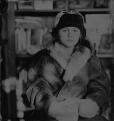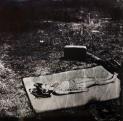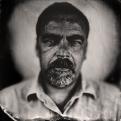|
|
Address: 1065, Budapest Nagymező utca 20.
Phone number: (1) 473-2666
E-mail: maimano@maimano.hu
Opening hours: Mon-Sun 11-19
|
Tamás Varga Declaring war on extremely mechanistic digital tsunami that uses hardly any of traditional photographic methods, has been for some interested in historic photography processes, in the last 4-5 years, only wet collodion process.
Who knows what a job it is to perfectly pour shoot cotton dissolved in ether on clean glass, then possibly sensitize it in silver nitrate bath without stain and air bubbles, and even in the wet, and then, while it is still wet take the photos this personn will most certainly appreciate the work Varga does.
Anyone who thinks that the process of creation is not just pushing of a button, downloading digital files and manipulation it can appreciate how difficult and complex feeling is when we invent a recording, we ponder at it for long , to prepare the necessary material, perform manual tasks, we use our forefathers' tools, machinery, knowledge, and only then push the button right after these. Then we do not immediately check it on the screen, but we still have to develop the shot then dry it... I know it's not a trendy thing. But do all things have to be that? He has compiled a large amount of material including exciting portraits, still lives, and mammoth size images that are unique of their kind in Hungary.
One of the important parts of the exhibition at the Mai Manó Ház is to show all photographers involved in traditional methods who chose nineteenth century methods to show their twenty-first century approach. The co-existence of these two in this exhibition proves a unique values.
The curator of the exhibition, Károly Kincses



